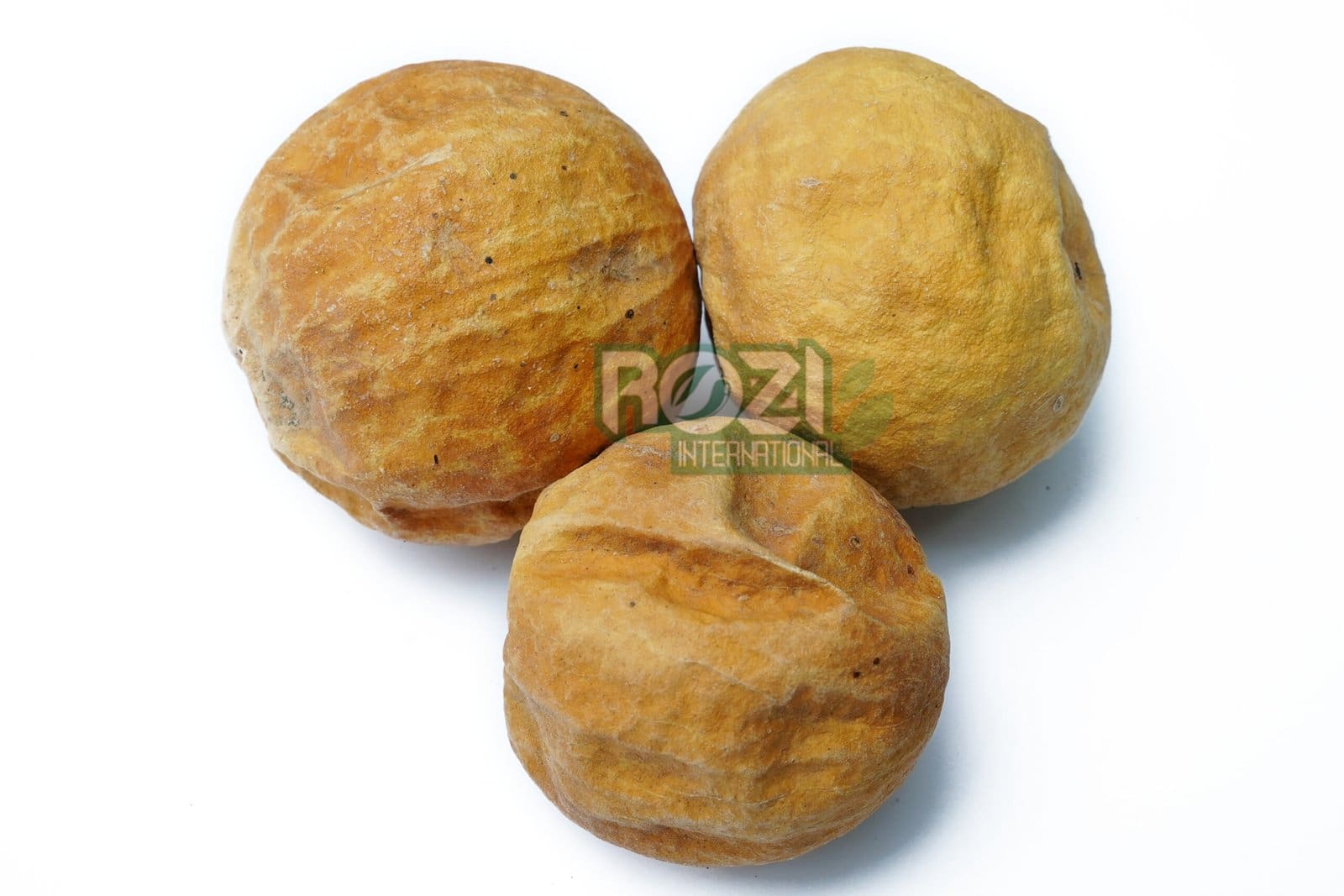Colocynth Herb / Citrullus Colocynthis / Tuma
English Name: Colocynth Herb
Botanical Name: Citrullus Colocynthis
Local Name: Tuma
Product Description
Colocynth, scientifically known as Citrullus colocynthis, is a plant belonging to the gourd family (Cucurbitaceae). Also known as bitter apple or desert gourd, colocynth is native to the Mediterranean region, North Africa, and parts of Asia. It is a perennial vine that bears yellow, gourd-like fruits.
Colocynth has a long history of use in traditional medicine, particularly in herbal remedies. However, it’s important to note that the plant contains powerful and potentially toxic compounds, and its use should be approached with caution and under the guidance of a healthcare professional.
Juniper Berries /Juniperus / Haubair
English Name: Juniper Berries
Botanical Name: Juniperus
Local Name: Haubair
Product Description
Juniper berries are the small, round cones of the juniper tree, scientifically known as Juniperus communis. Despite their name, these “berries” are not true berries but are actually seed cones with a fleshy and merged cone scale, giving them a berry-like appearance. Juniper trees are evergreen conifers that belong to the cypress family, Cupressaceae.
These berries are typically bluish-black in color, although some varieties can be green or reddish when immature. They have a strong, distinct flavor that is both piney and slightly citrusy. Juniper berries are used as a spice in various culinary applications, particularly in European cuisine. They are a key ingredient in flavoring gin, providing it with its characteristic taste, and are also used to enhance the flavors of meats, sauces, marinades, and pickled dishes.
Embilia/ Embilia Ribes/ Vavding
English Name: Embilia
Botanical Name: Embilia Ribes
Local Name: Vavding
Product Description
Amla, scientifically known as Emblica officinalis or Indian gooseberry, is a highly nutritious fruit that has been used for centuries in traditional Ayurvedic medicine for its various health benefits. When amla is dried, it undergoes a preservation process where its moisture content is removed, resulting in a condensed and shelf-stable form of the fruit.
Dried amla, also known as amla powder or dried Indian gooseberry, is a popular ingredient in traditional medicine and culinary applications. In Ayurveda, dried amla is believed to have potent antioxidant properties, and it is often used in herbal formulations to boost the immune system, aid digestion, and promote overall well-being. It is also rich in vitamin C, making it valuable for skin health and as a natural immunity booster.
Sapistaan /Cordia Latifolia/ Lasoorian
English Name: Sapistan Herb
Botanical Name: Cordia Latifolia
Local Name: Lasoorian
Product Description
Sapistan, scientifically known as Manilkara zapota, is a tropical evergreen tree native to Central America, but it is now widely cultivated in tropical regions around the world. Commonly known as sapodilla, sapistan, or chikoo, this tree is prized for its sweet and grainy-textured fruit.
The sapodilla fruit is oval or round in shape and typically brown in color when ripe. The flesh is exceptionally sweet and flavorful, often described as a blend of pear, brown sugar, and root beer. The fruit contains black, shiny seeds within its juicy, edible pulp.
Gallnut White /Quercus infectoria / Mazo Sufaid
English Name: Gallnut White
Botanical Name: Quercus infectoria
Local Name: Mazo Sufaid
Product Description
Gallnut white, also known as white gallnut or Chinese gall, is a type of gall formed on the branches of certain oak trees (Quercus spp.) due to the activity of gall wasps or gallflies. These galls are spherical growths induced by the tree in response to the presence of the insect’s larvae. Gallnut white is notably smaller and lighter in color compared to traditional gallnuts, often appearing pale yellow to white.
Historically, gallnut white has been used for various purposes. One significant application is in traditional medicine, where it has been employed for its astringent and antimicrobial properties. In some cultures, it has been used as a natural remedy for skin conditions, wounds, and digestive issues.
Gallnut Green/ Quercus infectoria / Mazo Sabaz
English Name: Gallnut Green
Botanical Name: Quercus infectoria
Local Name: Mazo Sabaz
Product Description
Gallnut green, also known as nutgalls or oak galls, refers to abnormal growths found on various species of oak trees (Quercus spp.). These formations are induced by certain insects, such as gall wasps or gallflies, which lay their eggs in the bark of oak trees. The tree reacts to the presence of the insect’s egg by forming a tumor-like swelling, which eventually hardens and turns woody, protecting the growing larvae inside.
Gallnuts have been historically used for various purposes. One of their significant applications is in the production of ink and dye. The tannic acid present in gallnuts reacts with iron salts to create a chemical reaction, resulting in a dark, permanent ink. Historically, this ink was widely used for writing and drawing, especially in ancient manuscripts.
Jujube Fruit/ Ziziphus Jujuba / Unab
English Name: Jujube Fruit
Botanical Name: Ziziphus Jujuba
Local Name: Unab
Product Description
Jujube fruit (Ziziphus jujuba) is also known as the Chinese date, jujube, or red date. The plant is native to China and has been grown in the U.S. for more than 175 years. The jujube fruit ranges in shape from round to pear-shaped.
The seeds fruit, and bark of jujube have been used in traditional medicine for anxiety and insomnia, and as an appetite stimulant or digestive aid. Experiments in humans and animals support the presence of anxiolytic and sedative properties. However, robust evidence from epidemiologic and clinical studies is lacking.
Harar Black/Terminalia Chebula / Hareer Siah
English Name: Harar Black
Botanical Name: Terminalia Chebula
Local Name: Hareer Siah
Product Description
Harar Black, scientifically known as Terminalia chebula, is a tree native to Southeast Asia, particularly in countries like India, Sri Lanka, Bangladesh, and Malaysia. Also known as “Haritaki” in Ayurvedic medicine, it is a member of the Combretaceae family.
The fruit of the Harar Black tree is small, round, and dark in color, resembling a plum. It has a bitter and astringent taste and is used both in traditional medicine and culinary applications. In Ayurveda, black myrobalan is highly regarded for its medicinal properties. It is believed to have digestive, rejuvenating, and detoxifying effects, making it a key ingredient in various Ayurvedic formulations.
Harar Green/Terminalia Chebula / Hareer Sabz
English Name: Harar Green
Botanical Name: Terminalia Chebula
Local Name: Harrar Sabz
Product Description
Harar Green, scientifically known as Terminalia chebula, is a species of tree belonging to the Combretaceae family. Also known as “Haritaki” in Ayurvedic medicine, it is native to South Asia, particularly found in countries like India, Sri Lanka, and Bangladesh.
The Harar Green tree produces small, greenish-yellow fruit, which is spherical and wrinkled when ripe. It has a bitter and astringent taste. In traditional medicine, green myrobalan holds a revered place due to its wide array of health benefits. It is used in various Ayurvedic formulations for its digestive, rejuvenating, and detoxifying properties.





















